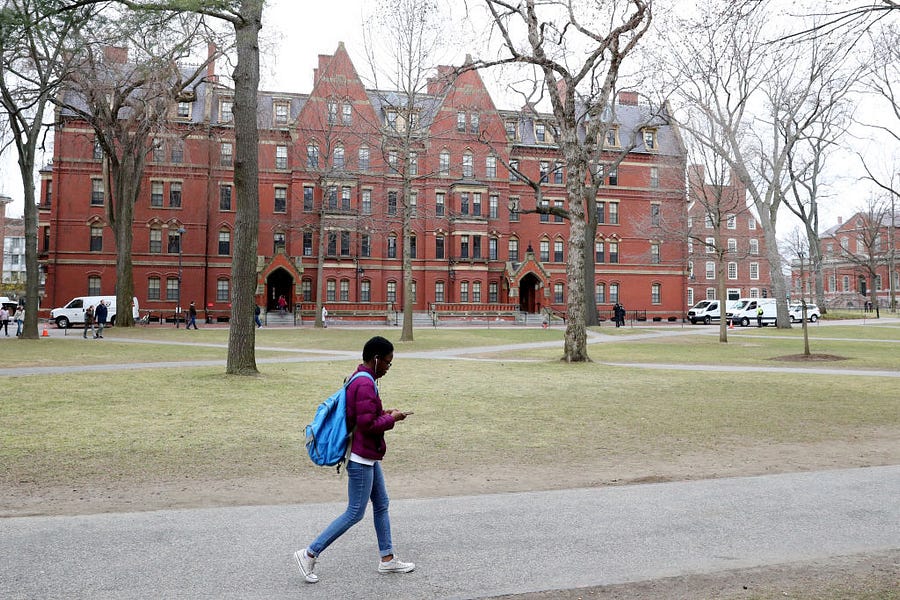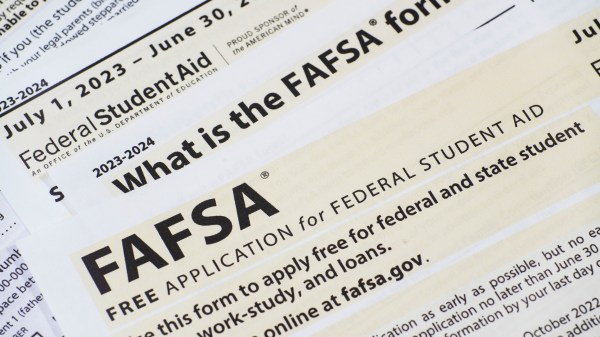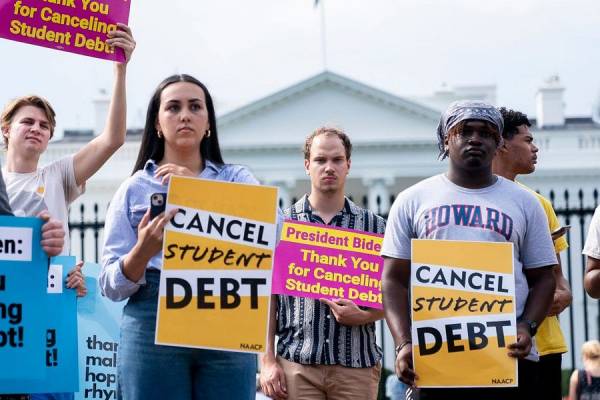The runaway inflation in the cost of higher education is disproportionate to the benefits it provides.
As Joe Biden inches closer to the desperate political ploy of “debt forgiveness,” the evidence that this regressive wealth transfer is ill-begotten is becoming clearer from his own administration’s caveats to the decision.
We have a massive student loan market because the federal government made a decision to subsidize such a thing many years ago, with no consideration for underwriting. The ability and propensity of a borrower to pay a loan back is the essence of market-based lending. In the case of the student loan market, social aims were to trump economic logic, and this was an explicitly intentional decision. In 2008 the country got to live through the grand finale of the other time the federal government made this decision at scale. And while the systemic risks in our student debt situation are not in the same universe as the housing collapse (the debt is with the taxpayer, not the credit markets and banking system), the folly of the federal government dismissing economic logic for social (or political) aims is again on full display.
Much has been written about the regressive nature of “canceling” student debt—of how the benefits in doing this accrue to the least unemployed and best compensated members of society. The data are unambiguous—very little student debt is held by the lower rungs of wage earners. The concept of a social safety net for the desperate and most disadvantaged never envisioned five-figure transfer payments to those who possess the most sociological, professional, and economic leverage in society.
The pending “cancellation” of student debt for those under a certain income limit speaks to this fatal flaw of the policy: that it benefits higher wage earners and is substantially paid by lower wage earners. One may think it is either clever policy-making or clever politicking to limit this “debt cancellation” to those making less than $150,000 annually (as of yet, the Biden administration had not yet finalized the income ceiling where the cancellation will cease). But what it really does is reveal the fact that this is a transfer payment for those of higher earnings, and higher earning capacity, which last time I checked was one of the main reasons people are told they will benefit from a college education. In other words, the income ceiling in one’s current year does nothing to limit the inherently regressive nature of this policy—because it has nothing to do with borrowers’ income potential.
People made a voluntary decision to attend college to enhance their future capacity for earnings, and to borrow a lot of money from the taxpayers to do so. This could have been a great decision or a poor one, depending on the borrower, but it was the decision made behind exactly that calculation. The benefit these people borrowed money for—the capacity for higher earnings in the future—stays even if they make “only” $110,000 right now. All at once, this caveat reveals that the policymakers know this vulnerability, and yet does nothing at all to change it.
There is an “injustice”—loosely defined—in the present student debt fiasco, but it is not addressed by transferring the cost of the debt from those who took it on to those who did not (and worse, those who already paid their debt back). The injustice is the runaway inflation in the cost of higher education disproportionate to the benefits it provides. That dynamic is a direct result of the very existence of the loan market college administrators have so exploited. That subsidy has facilitated a reckless allocation of resources to the absurd and the indoctrinating—dormitory amenities for recruitment purposes, exorbitant “diversity” departments— but it has not facilitated a greater experience for college students.
If the administration wants to aid college students, it can start by admitting the problem is in the colleges itself. What students (and their parents) are paying for is an exponentially bigger problem than how it is being paid for. But the administration cannot say that, so it resorts to rank pandering to bribe a vote from a vulnerable demographic, and does this at the expense of its own alleged constituency (the most vulnerable).
The right solution is not to replace student debt cancellation with auto loan or credit card debt cancellation, but of course, if the real agenda was a financial benefit to the lowest-tier wage earners, that is exactly where the policymakers would start. Those counter-proposals are also flawed for the obvious economic considerations—they are unaffordable and unjust transfer payments that ooze moral hazard. Economics is the study of human action around the allocation of scarce resources, and when humans act, they act around incentives. They act with God-given reason. They do not always act morally or responsibly, but they can be forgiven for assuming that when a $400 billion cancellation of student debt for good wage earners takes place, a pretty large cancellation of credit card debt for poor wage earners may be next. They could be forgiven for getting in line for the next transfer payment. In fact, they could be expected to do just that.
And that is what will happen—an exacerbated moral hazard that is wholly predictable and even logical—catalyzed by one of the dumbest policy considerations of our lifetime. None of this is to say that the college financial model is not broken. But this is no cure for the disease; it is a doubling down. If you want more of something, subsidize it. If we want more careless, thoughtless, and excessive debt, we will get just that by subsidizing debt.
The need of the hour is competition that brings school costs down. It is a public campaign for intentionality in college decisions—for better cost/benefits analysis on the home front. We need to consider innovation in the college funding world, including equity arrangements and scholarship-for-work programs with well-heeled employers. We need shaming of those institutions who continue escalating tuition costs to preposterous levels, all the while using endowment funds for vanity projects that do nothing to advance the needs of students. We need a rigorous study of outcomes-based funding models, risk-sharing, and other market mechanisms that will surely do better.
In short, we need to admit that in this case, government failed, and markets can work. Markets can and will bring improvement to the real problem. The government policies that caused this problem are not the solution. We are constantly told that wealth inequality is undermining the social fabric, and that people need to trust their governmental betters more than they do. The proposal on the table will exacerbate wealth inequality and undermine trust in government.
A focus on incentives leads us to the right place and away from this foolish consideration. The present system incentivizes waste, excess, and recklessness—and that’s just from university presidents! It disconnects the payer from the recipient of the service in such a way that the student’s needs are ignored and discounted. The proposed solution of loan cancellation incentivizes moral hazard, gamesmanship, and irresponsibility.
These are the wrong incentives. The right incentives will drive less resentment in society, less fiscal irresponsibility, and a repair of something goes far beyond a funding model. Market incentives will better allocate the resource of human capital post-college graduation. And yes, it will cost a lot less for everyone. These incentives will make a better outcome for even the “least among you”—not merely an advantaged professional class.
David L. Bahnsen is the founder of the Bahnsen Group and author of Crisis of Responsibility.








Please note that we at The Dispatch hold ourselves, our work, and our commenters to a higher standard than other places on the internet. We welcome comments that foster genuine debate or discussion—including comments critical of us or our work—but responses that include ad hominem attacks on fellow Dispatch members or are intended to stoke fear and anger may be moderated.